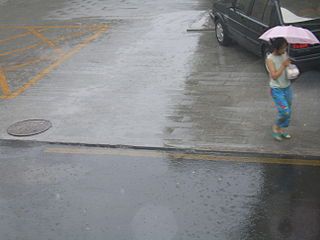From Guest Blogger Jeannette: The Philippine Paradox: The Weather, the Attitudes and the Sustainability in Construction

To say that the Philippine weather is unpredictable is an understatement. It may be hot and dry in one minute and rainy and flooding in the next.
It’s these kinds of weather changes that can be termed as “hell” for the local construction and architectural businesses. They’re faced with opposing obstacles that raises their stakes on quality and sustainability for housing and any other property developments. It may be a challenge but it’s not exactly impossible.
The Sense of Following Tradition
Most Filipinos have this colonial mentality that they apply to almost anything, including buildings. Houses that are fashioned to look Western earned praises while traditional designs were termed as “cheap”, even though Western designs are generally not compatible with the country’s tropical climate. But this misconception is on the verge of being changed. As more architects turn towards environmentally inclined intentions, the use of traditional materials and architectural designs are becoming invaluable.
Famed Filipino architect Francisco Mañosa is one of the leaders in promoting the use of indigenous materials, not only for sustainability but also for architectural aesthetic. His home in Muntinlupa City uses traditional and local materials is the epitome of what Filipino architecture should be: environmentally inclined and a showcase of culture.
But while inexpensive materials like bamboo and rattan, the main materials for the Mañosa home, are being used in houses in rural provinces throughout the country, the major cities have a different story. Manila, for one, is prone to flooding in certain areas and the simplicity of traditional design presents numerous problems.
City Development
With almost two million residents, condominiums have become the top housing choice in the city. Local condo developers are doing their part in incorporating environmental designs as much as they can. Most use the basic sustainable measures such as the use of LED lights, steel jambs instead of wooden jambs, and pervious pavers.
In particular, condo developer DMCI Homes has developed a unique architectural design called the Lumiventt which is a passive design that employs the basic principles of airflow. Having a tropical climate causes high demand for cooling systems in the country, leading to high energy usage.This simple design helps reduce the need for such as it allows maximum air and ambient light to enter through the buildings, lowering energy consumption.
The Rocky Road to Energy Efficiency and Sustainability
Energy is one of the hot topics that the Philippines need to face. Blackouts are a regular occurrence in the southern provinces as current power generation fails to meet demand.
Energy and sustainability problems aren’t exactly on the high priority list of the government but non-profit organizations strive in making an effect in the country. That is why the Philippine Green Building Council was established. Its main goal is to promote sustainability in local building construction. It has developed a rating system for the performance and efficiency of green buildings, a guide similar to LEED. The system is called BERDE which focuses on the principles that fit the Philippine climate.
Various developers for both commercial and residential sectors have lined up to qualify for the rating system, denoting a good sign for the future of sustainability in building construction.
But this is only one aspect in the country’s efforts on sustainability. Everything eventually boils down to the common Filipino homeowner, whose choices can more or less certify or vilify the efficacy of a particular design. The colonial mentality sometimes clashes with the stubborn attitude of wanting cheaper things (LED lights are feared because of its price upfront). This paradoxical mix makes environmentally-friendly home designs for a wider population difficult. Perhaps the main challenge in the Philippines isn’t the fluctuating climate, but the inclination and education of the masses on the importance of sustainability.
